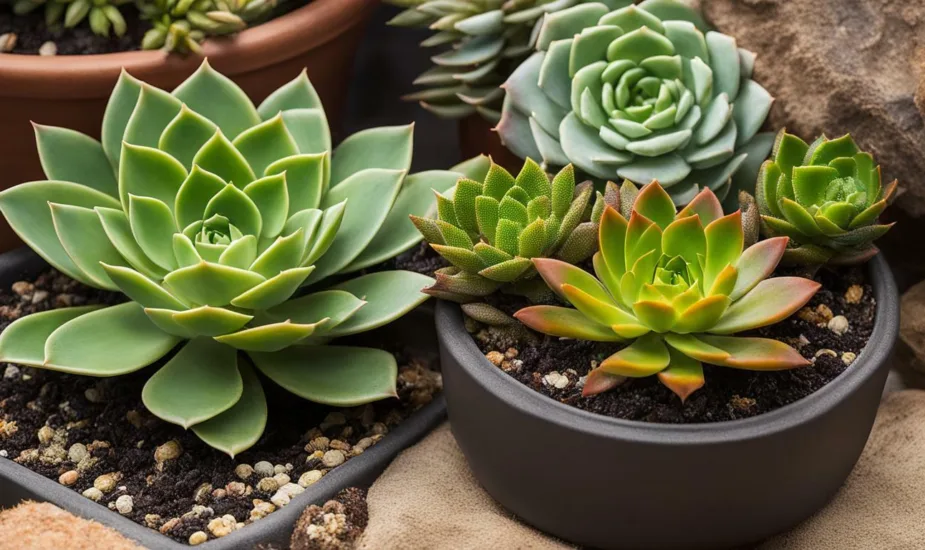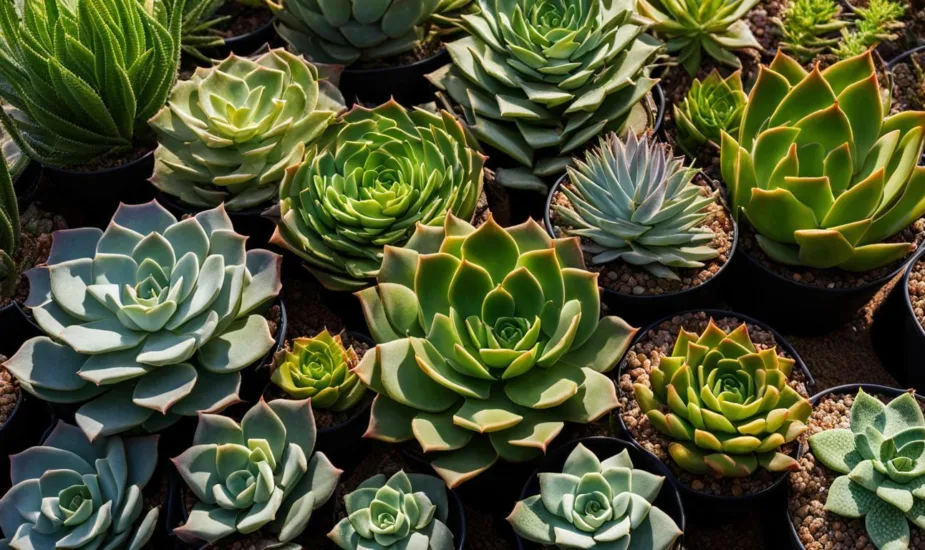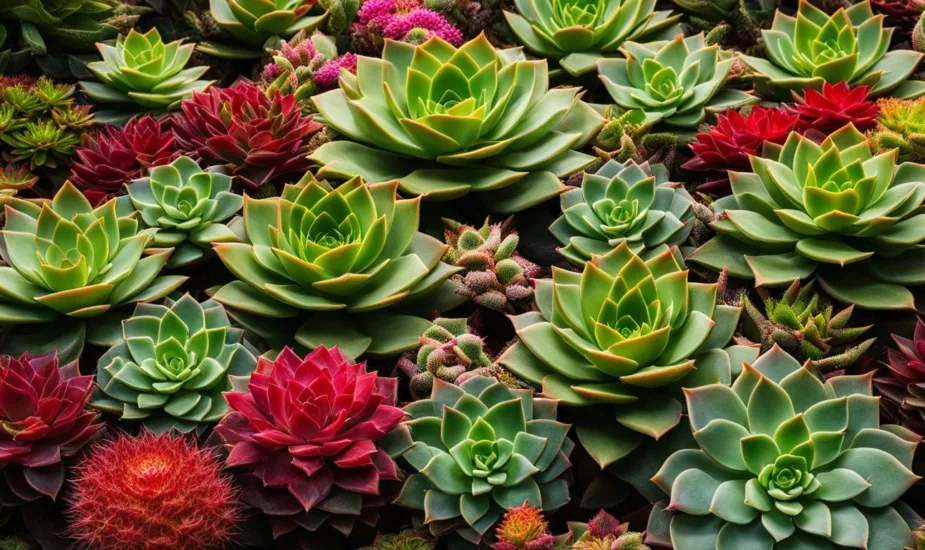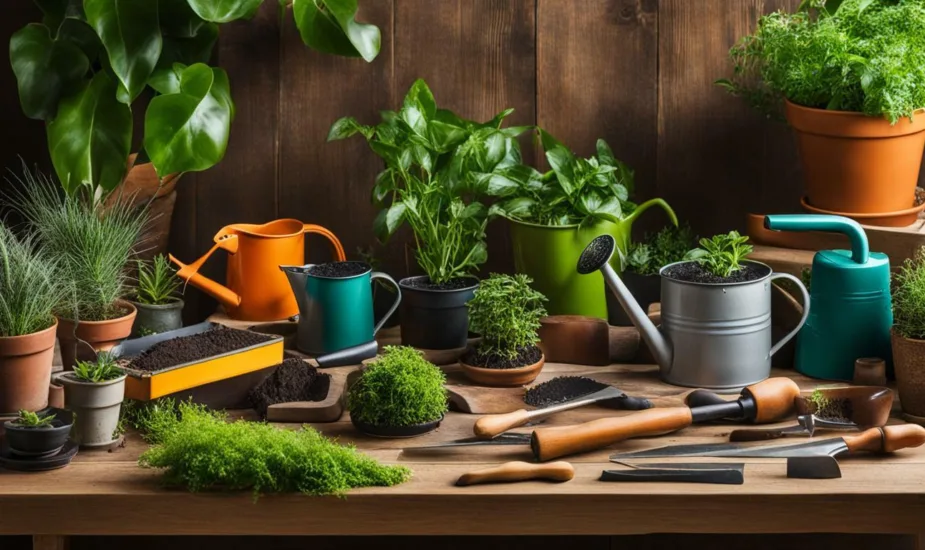Growing Vinca in Pots: A Container Gardener’s Guide

As a container gardener, one of the most rewarding plants you can grow is vinca. This beautiful and versatile plant is perfect for any gardener who wants to add some color and texture to their outdoor living space.
What makes vinca so great for container gardening? For one, it’s easy to care for and can thrive in a variety of growing conditions. Additionally, it is a low-maintenance plant that will reward you with gorgeous flowers throughout the growing season.
In this guide, I will walk you through everything you need to know about growing vinca in pots, from choosing the right container to caring for your plants throughout the year.
Key Takeaways:
- Vinca is an excellent plant for container gardening.
- It is easy to care for and adds color and texture to your outdoor space.
- In this guide, you will learn everything you need to know about growing vinca in pots.
Introduction to Growing Vinca in Pots
If you love gardening but don’t have enough space for a traditional garden, growing vinca in pots is a great option. As a container gardener myself, I have found that vinca is one of the easiest and most rewarding plants to grow in pots. Specifically, vinca minor, also known as creeping myrtle or periwinkle, is ideal for container cultivation.
Vinca is a low maintenance plant that produces lovely flowers that come in various shades of blue, purple, pink, and white. It’s also an evergreen, which means it’s going to look great all year round. But the best thing about growing vinca in pots is that it doesn’t require a lot of effort or skills.

Read on to learn how to grow vinca in pots, from choosing the right container to troubleshooting common issues along the way.
Choosing the Right Container for Vinca
When it comes to growing vinca in containers, choosing the right pot is essential for the plant’s health and overall success. Here are some tips to help you select the perfect container for your vinca:
| Factor | Consideration |
|---|---|
| Size | Vinca can grow quite large, so choose a pot that is at least 12 inches deep and wide enough to accommodate the plant’s mature size. It’s better to go a little larger than too small. |
| Drainage | Vinca needs well-draining soil, so make sure your pot has adequate drainage holes at the bottom. You can also add a layer of gravel or sand to improve drainage. |
| Material | There are many materials to choose from, including plastic, terracotta, and ceramic. Each has its pros and cons, but in general, plastic pots are lightweight and easy to move, while terracotta and ceramic pots are heavy and can dry out quickly. |
Once you have selected the right container, it’s time to prepare the soil mix. Use a high-quality potting soil with a mix of perlite or vermiculite to improve drainage and aeration. Avoid heavy garden soil, which can become compacted and waterlogged in a container.
With the right container and soil mix, your vinca will thrive in its new home and provide a beautiful addition to your container garden.

Planting Vinca in Pots
Now that you have chosen the perfect container for your vinca plant, it’s time to start planting. The first step is to decide how many plants you want to grow in each container. Vinca plants can spread out quite a bit, so it’s important to give them enough room to grow.
Next, fill your container with potting soil, leaving enough space at the top to accommodate your vinca plants. It’s best to use a soil mix specifically designed for container gardening, as it will provide the necessary drainage and nutrients for your plants.
Make a hole in the soil that is deep enough to accommodate the root ball of your vinca plant. Gently remove the plant from its original container and place it into the hole. Fill in the gaps with soil, making sure to firmly pack the soil around the base of the plant.
Water your newly planted vinca thoroughly, making sure the soil is evenly moist. From this point on, it’s important to keep the soil consistently moist, but not waterlogged, to encourage healthy growth.
As your vinca plants mature, they may start to trail out of the sides of the container. If this happens, don’t worry. Simply trim back the excess growth to keep the plant looking neat and tidy.
Remember to fertilize your vinca plants regularly throughout the growing season to encourage healthy growth and vibrant blooms.
Watering and Fertilizing Vinca in Pots
Vinca plants in containers require consistent watering to thrive. Check the soil moisture level regularly, and water whenever the top inch of soil feels dry to the touch. Be careful not to overwater, as this can lead to root rot and other problems.
Fertilize your vinca plants every two to four weeks with a balanced, water-soluble fertilizer. Be sure to follow the manufacturer’s instructions for application rates and timing.

TIP: Vinca plants can be quite sensitive to fertilizer, so it’s important not to overdo it. If you notice any signs of fertilizer burn, such as brown or yellow leaves, reduce the amount of fertilizer you are using.
Caring for Vinca in Containers
Vinca is a low-maintenance plant, making it an excellent choice for container gardening. As a container gardener, you must ensure that your vinca plants receive proper care to ensure their growth and longevity.
Sunlight exposure: Vinca plants prefer partial to full sunlight, but they can also thrive in shaded areas. If you live in a hot climate, it is advisable to keep your vinca plants in partial shade.
Temperature: Vinca plants can tolerate temperatures ranging from 10 to 35 degrees Celsius. However, they are sensitive to frost, so you must protect them from icy conditions.
Watering: Vinca plants need regular watering to thrive. It is advisable to water them every one or two days during the growing season. However, do not overwater them, as it may cause root rot.
Humidity: Vinca plants prefer a moderately humid environment, so you can mist them with water occasionally to maintain the moisture level.
Pests and diseases: Vinca plants are generally resistant to pests and diseases. However, aphids and spider mites may sometimes infest them. In such cases, you can use an insecticidal soap or neem oil to control the infestation.
Fertilizing: Vinca plants do not require frequent fertilizing, but adding a slow-release fertilizer to the potting soil during planting can aid in growth.
With proper care, vinca plants can bloom profusely and fill your container garden with vibrant colors. Keep in mind that they are low-maintenance plants, making them ideal for beginner container gardeners.

Propagating Vinca in Pots
Propagating vinca is a great way to expand your container garden without spending extra money on new plants. There are two main methods for propagating vinca: stem cuttings and division. Here is how to do it:
Stem Cuttings
To propagate vinca using stem cuttings, follow these steps:
- Take a cutting from a healthy, mature vinca plant in the spring or fall. Make sure it is at least 4 inches long and has several sets of leaves.
- Remove the bottom set of leaves, leaving only 2-3 sets at the top.
- Dip the cut end of the stem in rooting hormone powder.
- Plant the cutting in a container filled with a mixture of potting soil and sand, making sure at least one set of leaves is above the soil line.
- Water the cutting thoroughly and place it in a warm, bright location with indirect sunlight.
- Keep the soil moist, but not waterlogged, and mist the leaves occasionally to maintain humidity.
- After several weeks, the cutting should develop roots and begin to grow. You can then transplant it to a larger container as needed.
Division
The division method is best done in the spring when the plant is actively growing. Here are the steps:
- Carefully remove the vinca plant from its container and gently shake off any excess soil.
- Inspect the root system for any unhealthy or damaged roots and trim them off with clean, sharp scissors.
- Identify the natural separation points in the plant where the stems and roots divide.
- Using your hands or a clean, sharp knife, carefully divide the plant into smaller sections with at least one stem and a healthy root system each.
- Plant each division in its own container with fresh potting soil and water well.
- Place the containers in a bright, warm location with indirect sunlight and keep the soil moist.
- Within a few weeks, each division should develop new growth and begin to thrive.
By using these propagation methods, you can easily expand your container garden and enjoy more beautiful vinca plants in your home or outdoor spaces.
Overwintering Vinca in Pots
Winter can be a challenging season for vinca plants, especially those grown in containers. However, with proper care, you can successfully overwinter your potted vinca plants and enjoy their beauty for years to come.
The first step in overwintering vinca in pots is to protect them from frost. This can be done by moving the containers to a sheltered location, such as a garage or covered porch. You can also cover the plants with a blanket or other protective material.
Proper watering is also crucial for overwintering vinca. While the plant may need less water during the winter months, it is still important to keep the soil consistently moist. Be careful not to overwater, as this can lead to root rot.
If your winters are particularly harsh, you may want to consider bringing your potted vinca plants indoors. Place them in a bright, cool location away from drafts and heat sources. Be sure to monitor the soil moisture and adjust watering as needed.
Finally, it is important to avoid fertilizing vinca plants during the winter months. The plant will be in a dormant state and will not require additional nutrients until the spring.
By following these simple steps, you can successfully overwinter your potted vinca plants and enjoy their beautiful blooms again next year.

Troubleshooting Common Issues with Vinca in Pots
If you’ve encountered any problems with your vinca plants in pots, don’t despair – there are solutions. Let’s explore some common issues and how to fix them:
Yellowing Leaves
If you notice yellowing leaves on your vinca plant, it may be caused by overwatering, poor drainage, or insufficient sunlight. Ensure your pot has proper drainage and avoid overwatering. Move your pot to a sunnier location, or consider supplementing with artificial light if necessary.
Wilting
Wilting may indicate underwatering or root rot due to overwatering. Check the soil moisture level regularly and avoid letting the soil dry out completely. If your soil is waterlogged and roots are rotting, repot the plant with fresh soil in a container with proper drainage.
Lack of Flowering
If your vinca plant isn’t producing blooms, it may be due to lack of sunlight or nutrients. Move your pot to a sunnier location and consider fertilizing with a balanced fertilizer every few weeks. Be sure to follow the instructions on the fertilizer package carefully.
Conclusion
Vinca plants are generally low-maintenance and easy to grow in pots. But if you do run into any issues, don’t be discouraged. With a little troubleshooting and care, you can keep your vinca thriving and enjoy its beautiful flowers for months to come.

Conclusion
As a container gardener, I highly recommend growing vinca in pots. It’s a versatile and easy-to-care-for plant that can add beauty and charm to any garden or balcony.
By following the tips and guidelines outlined in this guide, you can successfully grow vinca minor in containers and enjoy its lovely flowers and evergreen foliage year-round. Remember to choose the right container and soil, plant properly, provide adequate care, and troubleshoot any issues that may arise.
With regular watering and fertilizing, vinca in pots can thrive and bring joy to your space. So why not give it a try and see for yourself how rewarding container gardening can be?
FAQ
Q: Why is vinca a great plant for container gardening?
A: Vinca is a great plant for container gardening because it is relatively low-maintenance and can thrive in a variety of conditions. It has beautiful flowers and foliage, making it a visually appealing addition to any container garden.
Q: What is the specific variety of vinca ideal for container cultivation?
A: The specific variety of vinca ideal for container cultivation is vinca minor. It is a smaller variety that works well in pots and hanging baskets.
Q: What factors should I consider when choosing a container for vinca?
A: When choosing a container for vinca, consider the size of the plant, the drainage capabilities of the container, and the material of the pot. Ensure that the container has enough room for the roots to grow and that water can freely drain out to prevent root rot.
Q: What is the best soil mix for growing vinca in pots?
A: The best soil mix for growing vinca in pots is a well-draining potting medium. You can create a mix by combining equal parts potting soil, perlite, and peat moss. This will provide the ideal conditions for vinca to thrive.
Q: How do I plant vinca in pots?
A: To plant vinca in pots, make sure to space the plants adequately, provide enough depth for the roots, and place the plant in a location with partial sunlight. Water the plants regularly and fertilize them as needed to promote healthy growth.
Q: What are the essential care requirements for vinca in containers?
A: Vinca in containers requires a good amount of sunlight, moderate temperatures, and well-drained soil. It is important to water the plants regularly, especially during dry periods, and provide occasional fertilization to keep them healthy. Protecting the plants from common pests and diseases is also important.
Q: How can I propagate vinca in pots?
A: Vinca can be propagated in pots through stem cuttings or division. For stem cuttings, take a healthy cutting from an established plant and root it in a well-draining potting medium. For division, separate the plant into smaller sections and plant them in individual containers.
Q: How do I overwinter vinca in pots?
A: To overwinter vinca in pots, protect the plants from frost by moving them to a sheltered location or covering them with a frost cloth. Water the plants sparingly during the winter months and make sure they are not sitting in water. In colder regions, consider bringing the pots indoors to protect the plants from freezing temperatures.
Q: What are common issues that may arise when growing vinca in pots?
A: Common issues when growing vinca in pots include yellowing leaves, wilting, and lack of flowering. These problems can be caused by various factors such as over or under watering, nutrient deficiencies, or pests. Troubleshoot these issues by adjusting watering habits, fertilizing appropriately, and addressing any pest problems.
Q: How easy is it to grow vinca in pots?
A: Growing vinca in pots is relatively easy and rewarding. With proper care and attention to the plant’s needs, it can thrive and provide beautiful blooms throughout the growing season. Give it a try and enjoy the satisfaction of successfully cultivating vinca in your own container garden.
 Little Garden Tips
Little Garden Tips












